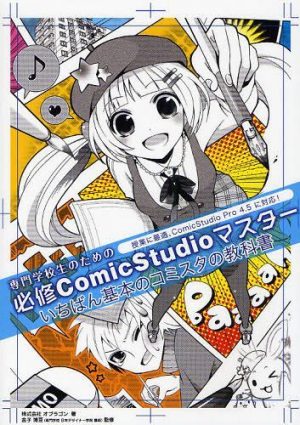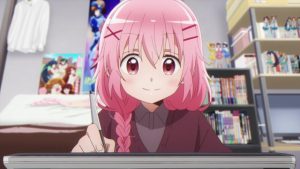
No matter what genre a manga may be, panels always play an important role in directing the readers’ eyes as well as a visual indication of pacing and setting. Most manga don’t follow one exact format throughout the whole volume since pacing and emphasis will change scene-to-scene, but there are a few generally agreed upon formats for conveying certain things. Let’s take a look at some different manga panels and their purposes!
Short, comedic, contained
This is probably the easiest to describe and explain since it has the most basic, uniform presentation and purpose. 4 panels, the yonkoma/4koma style is 4 usually long rectangles on top of one another. This style is mostly used as one specific scene or story per page. The simple and easy to follow structure is mostly used for comedic effect with simple humor that can be easily understood. It often follows the Kishotenketsu style where the first panel sets the scene, the second develops the basis for the climax, the third is the climax, and the fourth is the conclusion or reaction. A good example of this is Pop Team Epic!. Gokoma/5koma are also used with similar results though not as popular as the yonkoma format
Fast-paced, action

In order to convey a heated battle or dynamic action, the number of panels will increase with a greater shift in characters’ or objects’ movements. These panels will tend to be smaller and highlight a specific movement or action such as ducking under a punch. There isn’t a need for greater space as the setting this action is taking place in is not important for the reader to keep in mind while reading. Many times, the usual squares and rectangles may be replaced with triangles or zig-zagging borders to give it a sharper, more dynamic feeling.
Slow-paced, dialogue-based
When it comes to following a conversation, simple rectangles or squares work best. Because the dialogue will be as -if not more- important than the pictures, bigger panels will be used to capture everything. There will be fewer dramatic changes from panel to panel, though often the apparent viewing angle may differ so as not to appear too similar throughout the conversation. The setting, delivery, and reception of whatever is being said usually needs to be included so there needs to be enough room for say, a face and a bit of background.
Settings, unique images
https://twitter.com/NEBU_KURO/status/1010397739220287488
Spreads, or images spanning two or more pages, are often located at the beginning of manga as a way to present a large, detailed image that somehow helps the reader gain a broader sense of the setting or characters. For example, a manga about adventuring in many places might have a huge map of all the areas covered or yet to be explored. If there are numerous characters involved, everyone might be gathered on this page to give a good indication of how they compare with each other. Sometimes they’re used to capture just how vast or deep something is. You spend 90% of the time with your eyes jumping from small panel to small panel and then BAM you turn the page to see a giant, connected image of something. This shock of size helps you feel the characters’ surprise at whatever they’ve just come upon.
Final Thoughts
There are many styles and techniques for paneling in manga, just as there are many ways to tell similar stories! There’s no right way to do a particular thing but these tend to be more agreed-upon techniques for storytelling. Hopefully, this will give you a greater appreciation for manga artists, and perhaps give you some ideas, should you wish to make your own manga!
[PR_honeys title="Honeys Anime Recommends!" text="4koma? Big panel? Short panel? Lots of rectangles or a bunch of small ones? Or should you just go for a full spread? It's really hard to know what goes where the best and when you have too much or not enough. That is where we have you covered. Honey’s Anime recommends the following 'Manga Drawing / Comprehensive Course' from Manabi Journey which is professionally taught in English, complete with detailed feedback, and has produced over 100 professional manga artists in Japan. Check it out because Honey's Anime and Manabi Journey are here to help you!" url="https://tour.manabijourney.jp/mangadrawing//?utm_source=honeysanime&utm_medium=banner700x200&utm_content=inside-single&utm_campaign=manabijourney-mangadrawing-comprehensive2" onclick="ga('send', 'event', 'link_external', 'click', 'to_manabi_journey_manga_comprehensive2@single_pr');" img=' ']
']
Recommended Post
Which Manga Drawing Software is Actually Good?
Recommended Post



